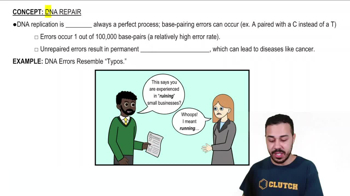Textbook Question
Which of the following pairs of base sequences could form a short stretch of a normal double helix of DNA?a. 5′-AGCT-3′ with 5′-TCGA-3′b. 5′-GCGC-3′ with 5′-TATA-3′c. 5′-ATGC-3′ with 5′-GCAT-3′d. All of these pairs are correct.
3318
views





